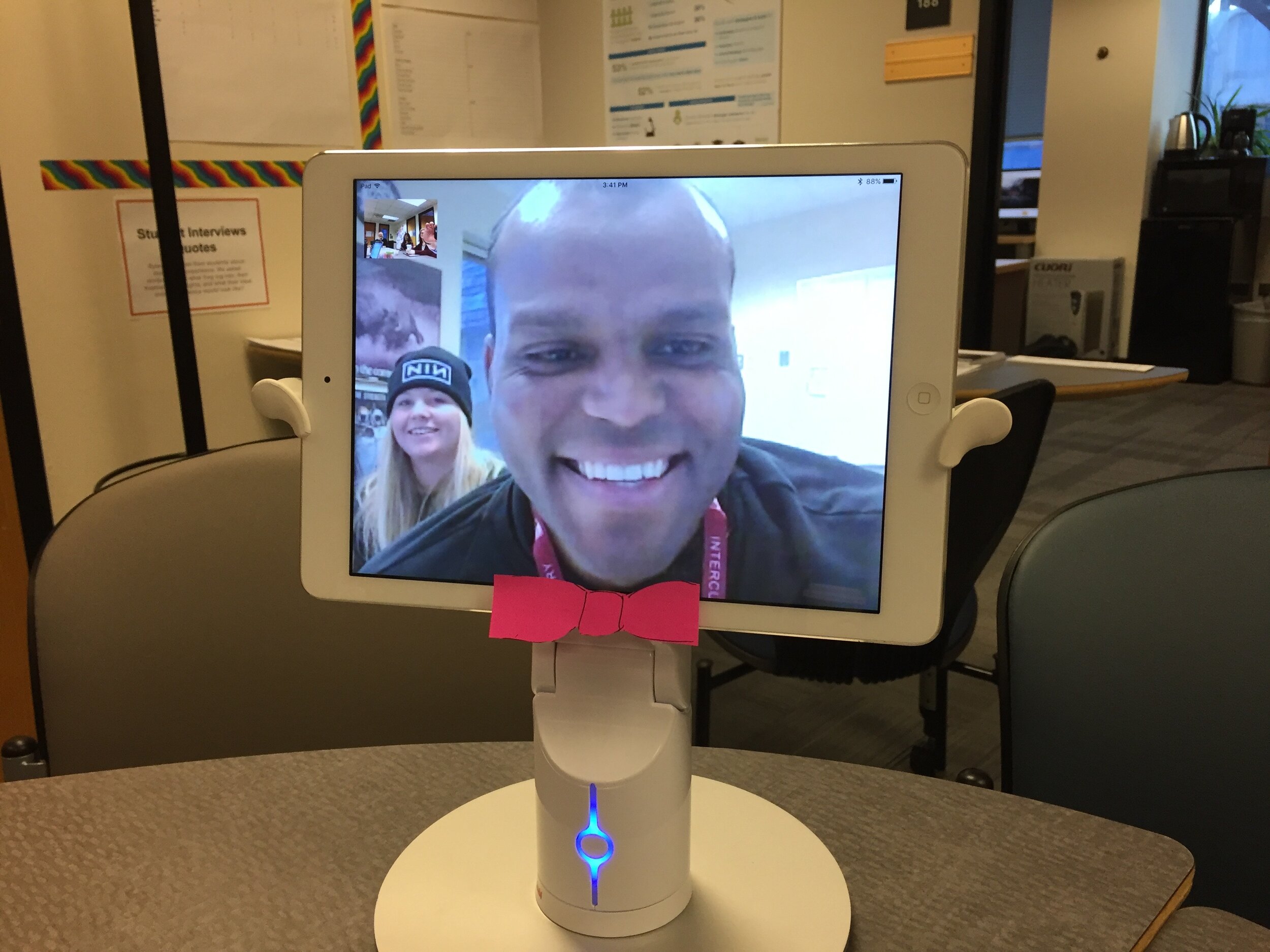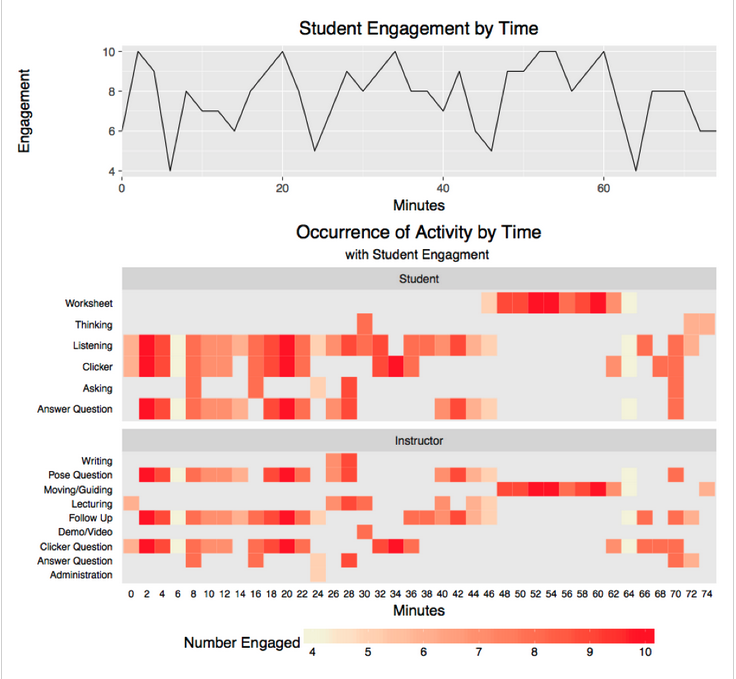Designing User Experiences
Designing User Experiences
A Kubi holding an iPad running a Zoom session.
Kubi Project — Helping Students Who Can’t Be On Campus Complete Their Classes
Background
Students with serious illnesses or those who recover from surgeries can sometimes cognitively engage with their learning, and yet they may not be able to be physically present in the classroom during their treatment or recovery. If their attendance is required, they may need to drop out; which results in them paying more for their education than necessary, and in some cases, not returning to complete their classes.
Action
In 2016, I formed a seven-person cross functional team to propose a solution to this problem. We entered a competition, pitched to a panel of judges, and received seed funding for our solution. We prototyped a service that would deliver a telepresence robotic device, a Kubi, to the classroom so that sick or injured students could use Zoom to participate in class. The Kubi is a remote-controlled, rotating stand that holds a tablet, such as an iPad. It can rotate 320 degrees side to side and 90 degrees up and down. This allows the remote student to see and interact with the in-class students and their professor. We interviewed professors and students who had participated in the project. We documented how the professors used the Kubi in class. We also developed personas of typical student users.
Results
In one year we helped 11 students attend 302 classes. We helped one cancer patient finish a degree and one student complete a class while recovering from a broken hip. Our pilot service became a fully-supported service for several years after that. While we helped a small portion of the student body, we made a big difference in the lives of the students we helped. We provided an important safety net for students who otherwise would have lost a semester, and might not have returned to complete their degrees. This project was documented in EDUCAUSE Review in 2018.
A visualization showing the activities a professor engaged in during a class.
Visualizing Instructional Practices — Improving the Quality of Education
Background
Over the past 20 years, the University of Colorado Boulder (UCB) has faced increasing competition for a shrinking pool of students, while state funding for has remained between two- and five-percent of its total budget. As a result, tuition has become UCB’s most significant source of revenue, which makes quality teaching a mission-critical service. However many professors are not trained how to teach; and the incentive structures for professors has deemphasized teaching in favor of research. In 2013, I found an opportunity to improve the quality of teaching at UCB to meet this growing challenge.
Action
I worked with researchers from UCB’s Center for STEM Learning to improve the quality of data available to professors; which they in turn, could use to improve their teaching. I launched a service (called the Visualization of Instructional Practices) that provided professors with visual representations of what they were doing, what their students were doing, and which technologies were in use when they taught a class. I hired undergraduate students and trained them to go into classrooms (when requested by the professors) to record their observations. The student observers were guided by an observational protocol (a set of descriptions of activities they should look for) when recording the class period. The students recorded their observations every two minutes; and at the end of a class period, they produced a data set, which we represented visually and shared with the professor. To protect the professor’s privacy and agency, no one else could access the identifiable data unless the professor shared it.
Results
This service grew each year and has been required for professors involved in a NSF-funded teaching improvement project. Approximately 170 observations have been made in the past four years. It is recommended for faculty of the College of Arts and Sciences to use to improve their teaching. Several professors have used data from our service in their cases for promotion and tenure.
Technology Copilots — Reducing the Cognitive Load on Professors
Background
The COVID 19 pandemic required the faculty members of the University of Colorado Boulder (UCB) to transform their teaching in a short time, and to be ready to pivot between in-person and remote modes with sometimes as short as 24 hours notice. Because UCB is largely an in-person university, the professors were not accustomed to teaching remotely or in a hybrid (simultaneously remote and in-person) format. The cognitive burden required to transform their class plans, learn technologies to aid with remote teaching, and to simultaneously teach students who were remote and in-person proved to be too much for them.
Action
In 2020, I created a service to train, and support a team of student technology copilots who would enter a classroom and operate a laptop running Zoom and wall-mounted cameras. In addition, they facilitated the interactions of the remote students by monitoring a chat room on Zoom to ensure the students were following the class activities, and to alert the professor when a remote student had a question. I hired a graduate assistant manager who had experience training and supporting students to run this service. I also hired 30 undergraduate students to be copilots, and ensured they were trained and supported in technologies used in remote teaching, as well as in facilitating student interactions. I also asked my team to build an online training that our copilots or anyone else could enroll in. I marketed the service to faculty members and administrators.
Results
In the 2020-21 academic year, our team helped 161 instructors teach 194 courses in 114 classrooms. 200 people enrolled in our online training. We received heartfelt praise and thanks from the faculty and thanks from the copilots who were able to earn a wage while helping the university navigate the pandemic in a meaningful way. Early in 2021, the UCB administration asked us to make the Technology Copilots an ongoing service.


